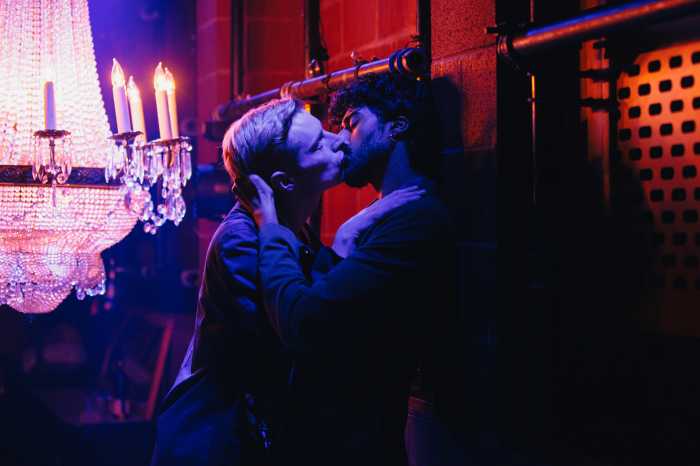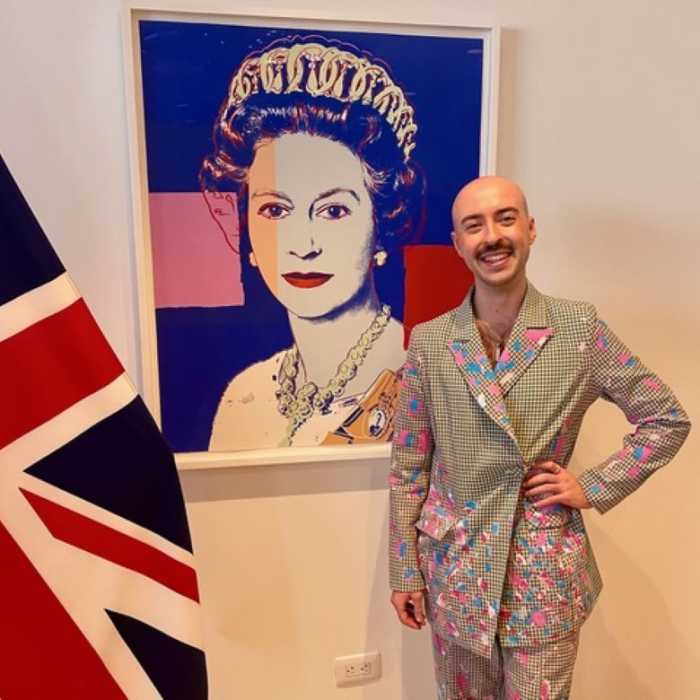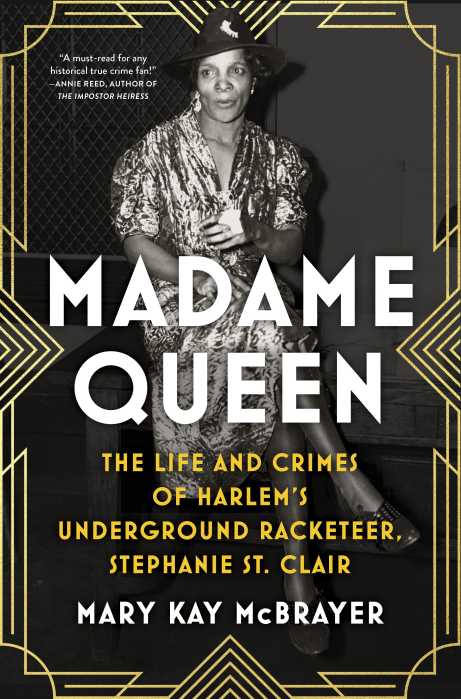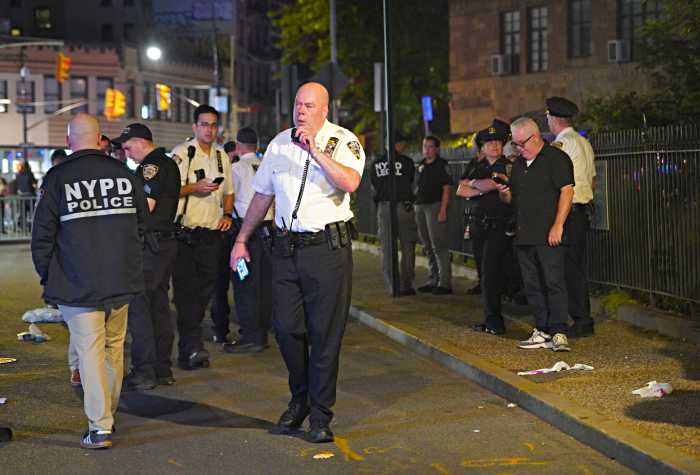Wistful, woebegone couples grope for a last shot at happiness
In transferring Stephen Sondheim’s “Follies” from the Kennedy Center in DC to the Marquis Theatre on Broadway, producers announced they were, along with making a few secondary cast changes, clarifying the plot.
Huh?
When I saw the stunning DC revival, which starred the incomparable Bernadette Peters and earned every superlative loaded on by the critics, I felt its haunting power stemmed from a seemingly haphazard, almost ephemeral narrative structure. Aside from the biting, insightful musical numbers, the show’s strength lies in its haunting mood, desperate characters, and messy unpredictability, with plot details taking a back seat.
Life doesn’t play out logically and isn’t all tied up in a bow, so why should this story be any different?
So it was no small dose of relief when I saw that, despite some gratuitous tinkering, this production remains firmly intact and may vie with the original as the definitive version against which all future revivals will be measured. The run is strictly limited, so you better get your tickets now.
“Follies,” set in 1971 –– when the show debuted on Broadway –– in a crumbling theater slated to become a parking lot, follows the tangled trajectories of two long-married couples, Sally and Buddy and Phyllis and Ben, who have come to the reunion of a Ziegfeld-esque follies review that prospered between the two World Wars. Back in the day (30 years earlier) when they were barely out of their teens, the chorus girls and their randy dates would meet up at the Weismann Theater after their show and paint the town red.
Between the lively song-and-dance numbers gamely put on by aging hoofers trying to recapture a jolt of past glory, complications arise, chiefly, that the highly fragile Sally (Peters, in fine form) is still hopelessly in love with the hard-hearted Ben (Ron Raines). Their spouses, as it turns out, react with an icy sourness that uncovers decades of hidden mistrust and rancor. Do they love or loathe each other?
Under the direction of Eric Schaeffer, particularly poignant are the overlapping dual vignettes where the present-day couples are shadowed by their younger, more vibrant, and optimistic selves. Adding to the eerie nostalgia are the glamorously costumed showgirls of the bygone era (bedizened by Gregg Barnes), who hover over the proceedings like sage, slightly wounded ghosts.
The follies alumnae are gathered not only to say farewell to a dying, Depression-era theater tradition, but also to their dreams of picture-perfect love and career success.
This psychologically complex show has spawned several iconic numbers that have taken on lives of their own, and in context they still pack a wallop. Jayne Houdyshell’s goofy, self-deprecating take on “Broadway Baby” had the house cheering. Despite the absence of a single wrinkle on her face, Elaine Page cuts close to the bone as she delivers “I’m Still Here” with gruff exasperation. Danny Burstein (who plays Buddy) transforms “The God-Why-Don’t-You-Love-Me Blues” into a demented, hyper-frenetic freak show. And Peters doesn’t disappoint with her plaintive, captivating rendition of the tender torch song “Losing My Mind.”
As good as Peters is, the revelation in this “Follies” is Jan Maxwell, whose elegant, bitter Phyllis elicits sympathy even when she’s spewing venom. Her sardonic rendition of “Could I Leave You” is so acrid I winced and wanted to look away. She’s been up for four Tony Awards and should expect another nomination come spring.
While the musical numbers, many which recall vaudeville and burlesque, may be classified as “follies,” the raw emotions that rise to the surface are anything but. This challenging work, a meditation on the tug-of-war between memory and the passage of time, seems to get better with age, and reminds us why Sondheim deserves his stature as a musical theater genius.
Schaeffer has pulled out all the stops, assembling a dream-team cast of 41 and a lush, 28-piece orchestra. The cost is reported to be somewhere in the neighborhood of $10 million. The set, crafted by Derek McLane, is a study in contrasts, where a forlorn, dilapidated theater marked by a single iron staircase gives way to the fantasy world of “Loveland,” a riot of candy-colored pinks and crimsons.
Also remarkable is that the show runs practically real-time, beginning as attendees enter the reunion party and ending two-and-a-half hours later when it’s time for them (and us) to head home. Yet James Goldman, who wrote the book, and Sondheim, who wrote the score, have packed several lifetimes — supercharged with dance numbers, love affairs, rivalries, regrets, and recriminations — into this tiny space.
While this show is so durable it could work in almost any venue, it’s a shame they weren’t able to stage it in an old Broadway house that’s seen better days, especially in a theatrical season where site-specificity is all the rage. Attempts to cover up the walls of the bland, expansive 1986 Marquis Theatre to approximate a run-down 1920’ theater are rather sloppy.
During the curtain call, which had everyone on their feet, it didn’t feel right when Jan Maxwell came out second to last, right before Bernadette Peters. They should have taken their bows together.
Essentials:
FOLLIES
Marquis Theatre
1535 Broadway at 44th St.
Through Jan. 1
Tue. at 7 p.m.; Wed.-Sat. at 8 p.m.
Wed., Sat., at 2 p.m.; Sun. at 3 p.m.
$47-$175; ticketmaster.com
/* Style Definitions */ p.MsoNormal, li.MsoNormal, div.MsoNormal {mso-style-parent:””; margin:0in; margin-bottom:.0001pt; mso-pagination:widow-orphan; font-size:12.0pt; font-family:”Times New Roman”; mso-fareast-font-family:”Times New Roman”; mso-bidi-font-family:”Times New Roman”;} @page Section1 {size:8.5in 11.0in; margin:1.0in 1.25in 1.0in 1.25in; mso-header-margin:.5in; mso-footer-margin:.5in; mso-paper-source:0;} div.Section1 {page:Section1;} –>
–>

































